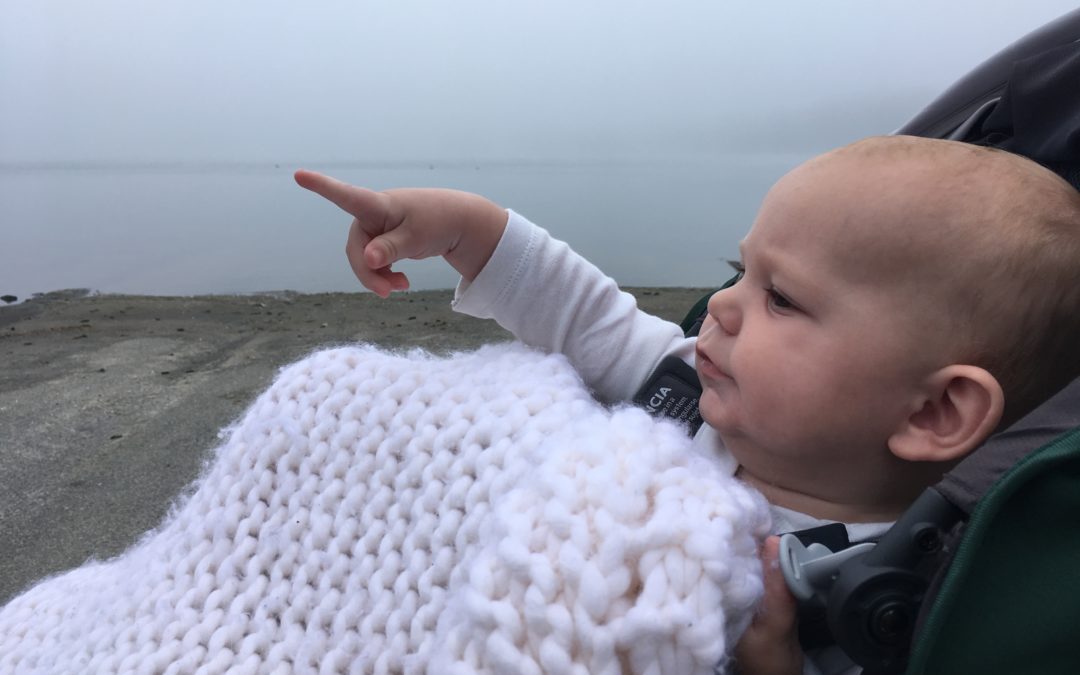My husband and I moved to Cape Cod several years ago to be closer to family and to raise our children with a strong connection to the natural world. We would drive past the airfield in Marstons Mills and always had a sense we would end up living somewhere nearby. We looked at so many homes up and down the Cape, had accepted offers that fell through, and were just about to give up hope until we drove up to a little home down the road from Shubael Pond. When I received the news our offer was accepted I was walking with a dear friend that randomly grew up a few houses down. Another sign it felt like the spirit of the house was calling us home. The day we took the keys my husband and I went for a walk and sat by the edge of the pond. The colors of the sky were fading into pink as the sun was setting behind us and a full moon was on the horizon. We sat there holding hands feeling a wave of immense gratitude that we found a place to live; one that was close to water and one of such beauty.
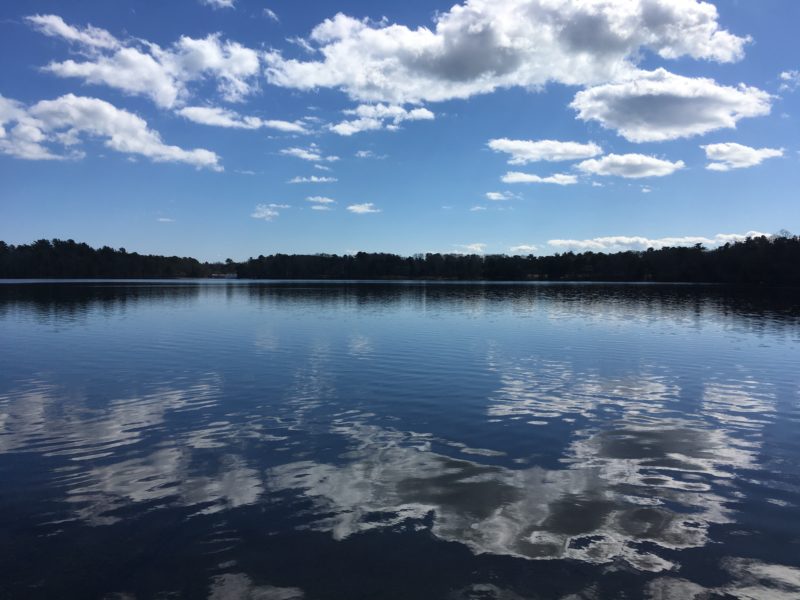
Wherever I have lived throughout my life, I can think of a body of water where I found refuge, healing, guidance, and shared reverence in return. Shubael Pond has become one of those places. Every time I have walked down there, I am given a sense of comfort in its familiarity, yet am also surprised by some new perspective.
I can draw from my memory countless ways that light, air and water have played together to create a different masterpiece. The clouds like sculptures reflecting on the glassy surface of the water, the golden sunlight setting upon the fiery autumn leaves, rays of light weaving through drifts of fog, rain casting circles above where below trout reel and Cormorant dive for their prey. In the spring you will hear the song of the Oriole, Goldfinch and Red-Winged Blackbird. The surrounding wetlands and treetops turn neon green and yellow with buds and wildflowers. Summer brings fish jumping, birds like Plover and Willet come grazing from the shore, Bald Eagles circle in the sky.
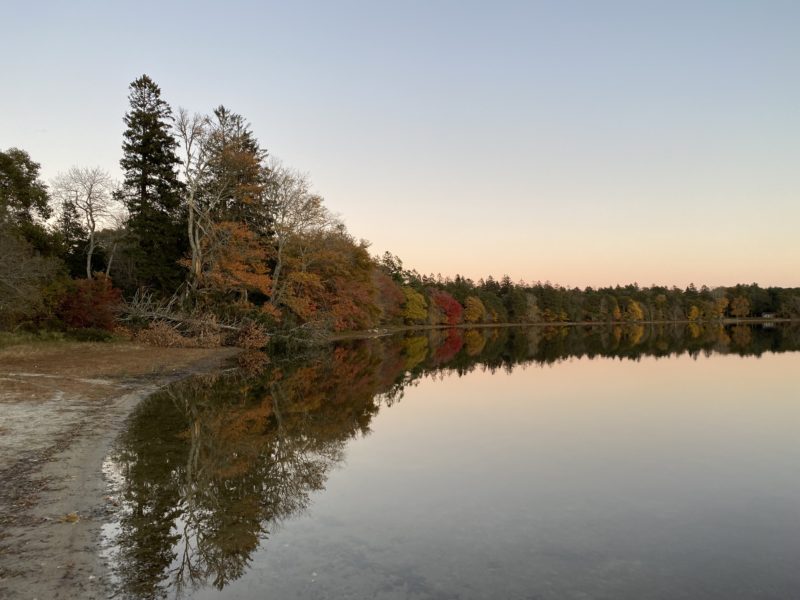
Autumn brings a rich palette of colors among the trees that mirror the surface. Winter brings lightshows in the sky, ice and snowy landscapes, and migrant birds take the stage like American Coots and Buffleheads. And throughout the year, people flock to the pond to gather, boat, fish, swim, take walks, find solitude, and to observe the natural beauty and diversity of the pond.
That first year living in the neighborhood is when I gave birth to my first child. The day I was in labor I walked down to the pond, stopping for contractions along the way. I went to pray and took a deep breath of fresh air before going to the hospital. Following his challenging birth I was required to be on bedrest for a month. The first thing I did when I was able to get out of bed was go to the pond with my newborn in my arms. It was a cold day in December but we bundled up and got out there. Everyday that followed my son and I took a walk to the pond. That time outside connecting with nature healed my postpartum. It instantly calmed my son when he was fussy and rejuvenated my sleepless soul. We watched the ducks and the sunset and met all our neighbors along each little journey. I imagined teaching him how to swim and how to fish there everyday like all the children I had seen the summer before. Little did I know that come summer time the pond would not be a safe place for any of these dreams to come true.
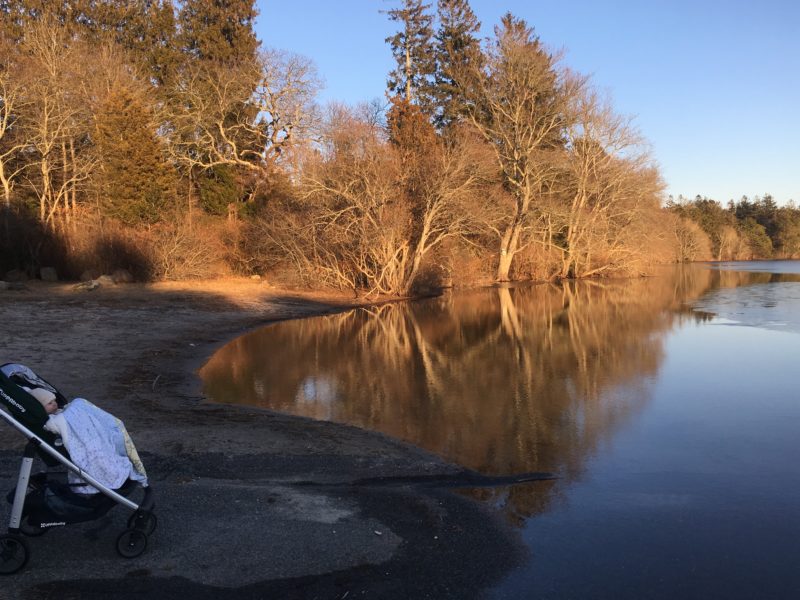
“Did you see the sign?” my neighbor asked me as I was going on my daily walk with my son. “The pond has cyanobacteria. Don’t touch it or let your son go near it. It can make you very sick. I’ve lived here for thirty years and I’ve never seen this before.” I knew of this problem as my degree from college is in natural resources and I taught environmental education. It was a warm late spring day just about the time you would start seeing neighbors setting up their chairs on the beach, kids dipping their toes in the water and brave ones going for a dive. When we got to the pond, no one was there. A sign was posted for children and dogs to keep their distance and that the pond was contaminated. I stood there for a long time just staring at my beloved pond and then I cried. My son was too young to notice and I stood behind his stroller weeping in private as we stared out at the beautiful landscape, not one you would ever imagine could make you sick. The world felt heavy, because as a conscious mother in these modern times I was endlessly navigating a world of man-made things to fear that are unhealthy for both myself and my child.
Parents have to worry about plastic, phthalates, formaldehyde, flame retardants, lead, and many other chemicals that have infiltrated life’s necessities. We see the data on climate change getting worse and worry about our children’s future. Even the street we walk down is lined with little yellow signs on people’s yards that say “no children” that warn of chemicals and pesticides. Somehow perfect green lawns have become more important than the health of our families and community. I wasn’t just looking at a picture in a college textbook of what could happen to our resources someday, I was now experiencing it right down the road from my own home.

Now when we visit the pond, we look and don’t touch, sometimes we stay far back and never get too close. It’s very difficult telling a toddler they can’t play in the sand, wade in the water, or play near the water’s edge. Young children want to engage with the world, especially nature, with all of their senses. This is how they learn and fall in love with the natural world before we ask them to save it. We are fortunate to have other clean places left on the Cape to experience this, yet the health of our waters is a growing problem. As a parent I am thankful for local non-profit organizations like the APCC that keep citizens up to date on the status of the algal blooms. This year, on an autumn day in late October we checked a report and saw very low levels of cyanobacteria. The water level was low and my son, who was almost 3, and I decided to take our first walk around the entire shoreline of the pond. It was an adventure and seemed like a rite of passage if you’ve ever lived in our neighborhood.
We crossed over and under fallen logs, found paths through overgrown wildflowers, jumped across streams and crawled under overgrown bushes covered in vines. Every ten yards or so was a new part we had to figure out how to get through together like a puzzle. It elicited so many questions and we discovered new things. We observed freshwater mollusks, collected fallen Red Maple leaves, and followed a Red tailed Hawk. We found a culvert, seemingly pouring out stormwater from a road nearby where almost every lawn is pristine in color and uniformity. I wondered if that was another source of the excess nutrients. We watched as our little beach became farther away and then closer as we rounded the bend of the pond. My son recognized cattails and some Mallard ducks that swam in our direction. We left with a stronger sense of place and a deeper bond with the ecology of our home.
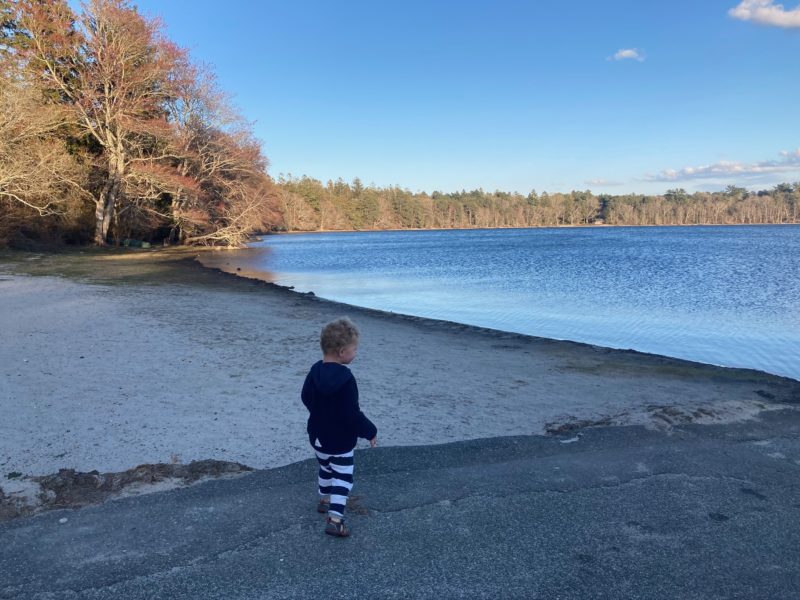
I have spent a lot of time in nature and the most important thing I have learned is that everything is connected. Each and every plant, bird, fungi, tree, and living thing has a purpose and a relationship with each other. We must remember that we are nature and depend on natural systems to thrive. Restoration of these systems begins with us, with you. Every small act counts. At our home we work with nature and not against it even though it may be against the status quo. We turned our front yard into a native wildflower garden and are planting native edibles in place of invasive ornamentals. We do not spray any chemicals, grow our own organic food, and are planting more native trees to create habitat for wildlife. We have done this with our own hands, little by little, and the hours I have spent outside with a shovel in my hand were times neighbors stopped by with encouragement or to ask questions about how they could do the same. We can educate ourselves and each other on ways to heal and protect our local waters. We can support local organizations that are sourcing the funds to provide research, design and better infrastructure. So that hopefully, one day we can feel free to be in the water again and let our children swim.
-Kirsten McCracken, Marstons Mills
All images from Kirsten McCracken of her son at different ages on Shubael Pond
Got a Pond Story you want to share? Email Kristin Andres [email protected]
Pond Stories are a collection of writings from Cape Codders and visitors who love the 1000 local ponds that dot the Cape. We hope this collection of stories, that are as much endearing as they are environmentally aware, will awaken your inner environmentalist to think deeper about our human impacts to these unique bodies of water. Check out these valuable resources to learn more about the current challenges Cape Cod ponds are facing and how you can be a better pond steward in your town.

